An open source hardware and software 28C64 EEPROM programmer, using the ATmega328 microcontroller. The goal of this project is to design and build an easy to use, single board programmer for 28C64 EEPROMs that could just be plugged in to a computer using a regular USB cable.
 Tobias Eriksson
Tobias Eriksson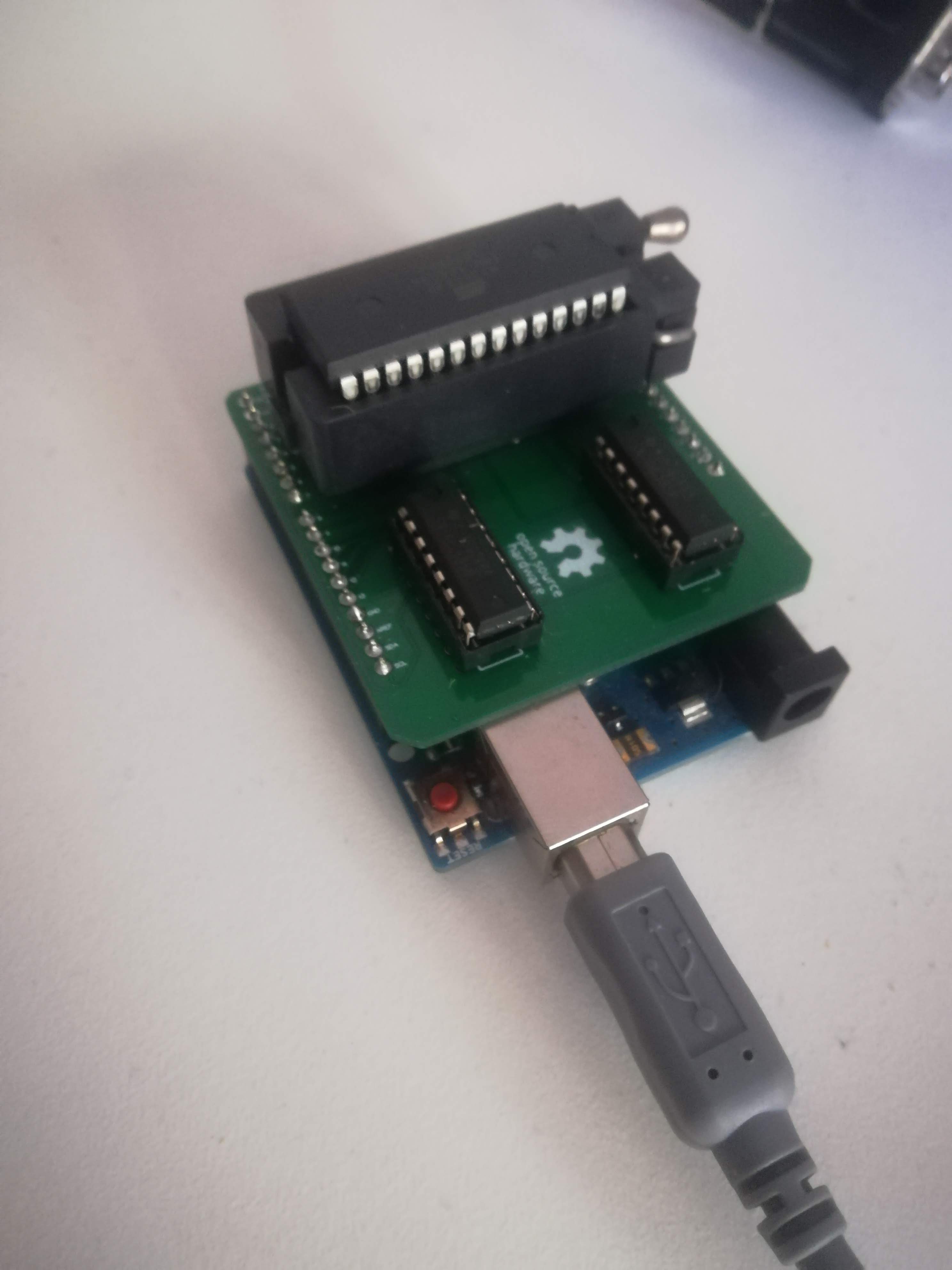
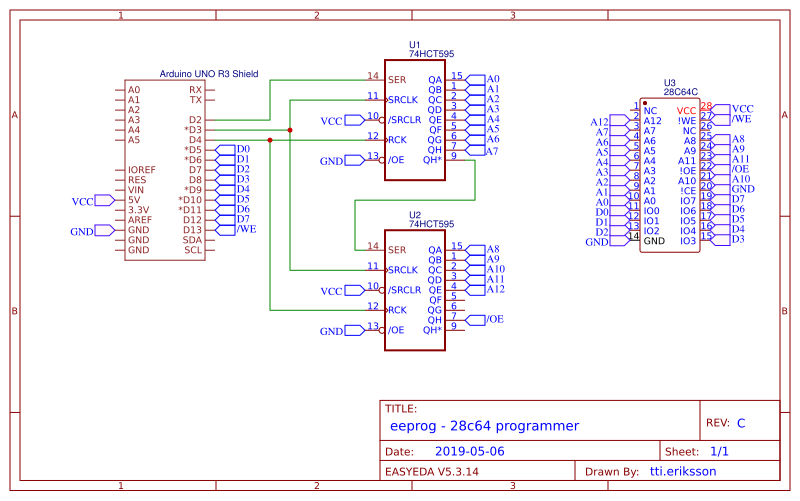


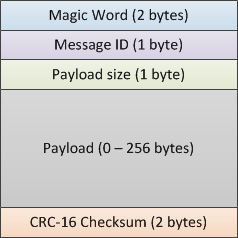
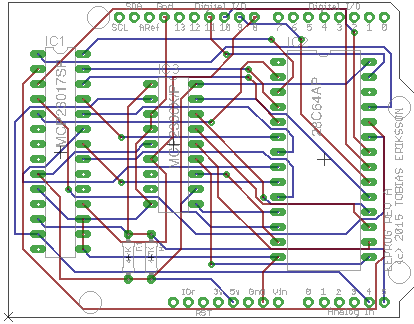
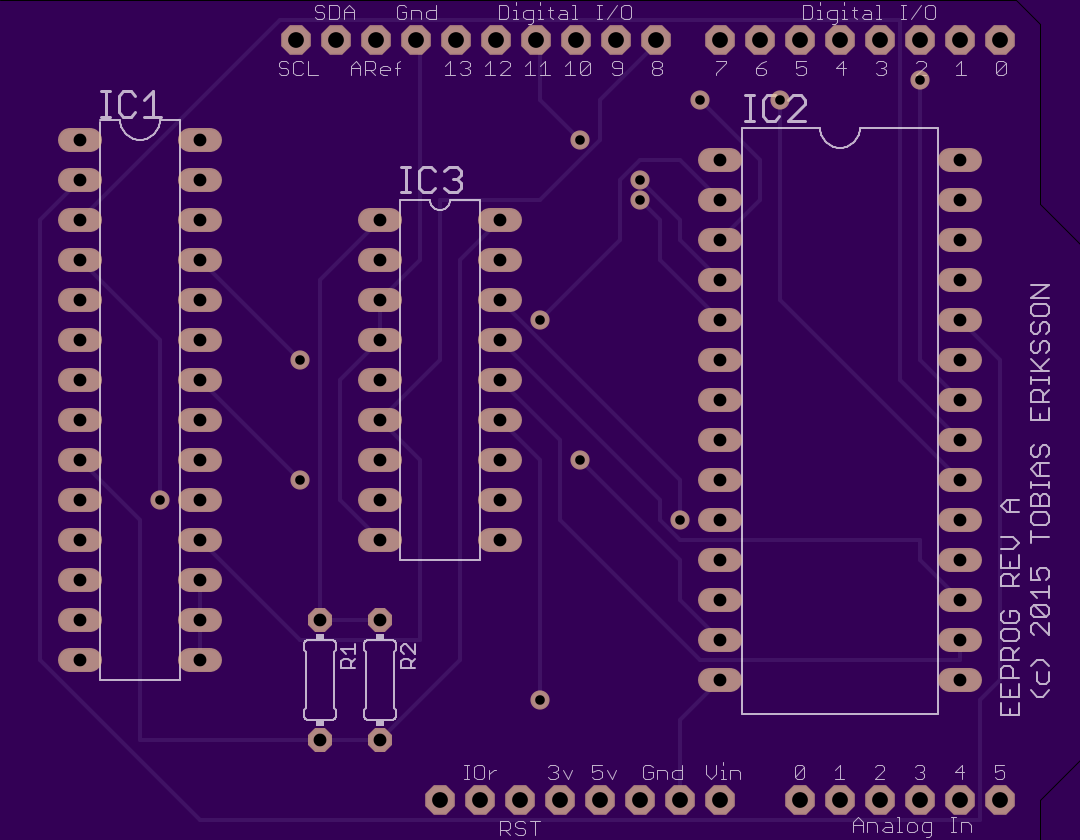








 Keenan Pinto
Keenan Pinto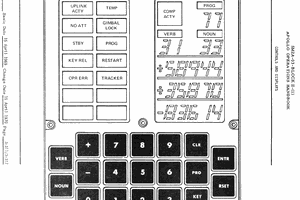
 Viva Penguinos
Viva Penguinos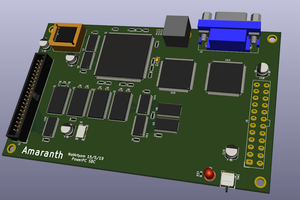
 Carson Herrington
Carson Herrington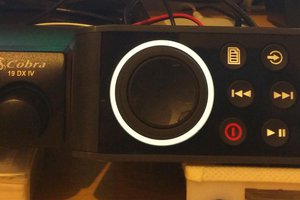
You've got two spare pins on the shift register so in principle you could modify the hardware to program up to 256kb chips? Unless the pinout is different which I haven't checked, the extra address lines would go to the NC pins on the ZIF socket.